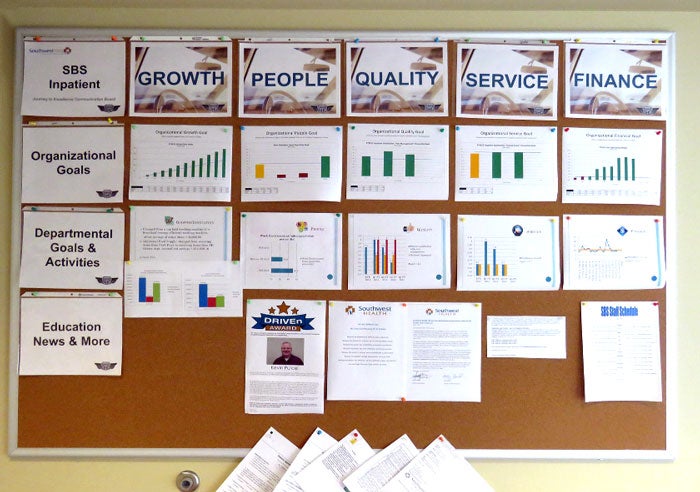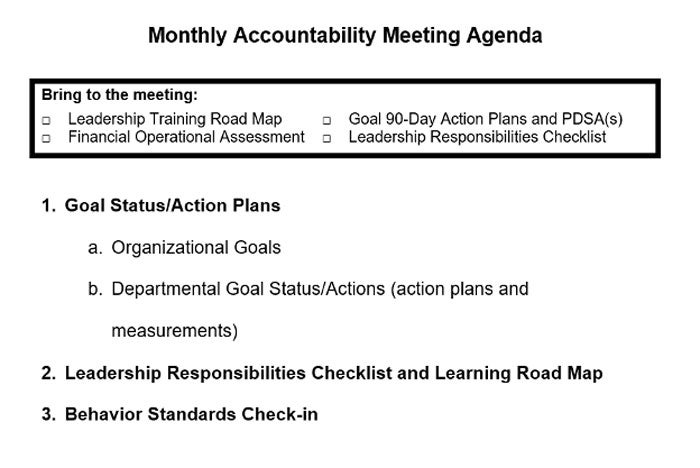
Governance Effectiveness
Don’t Forget the Big Strategic Picture
Discipline and well-timed tactics help boards stay focused on long-term goals
By Sue Tetzlaff and Jane McLeod
Successful stewardship of an organization — so that the mission, vision, strategies and goals are achieved — is central to the role of governance.
In many boardrooms, the intriguing appeal of day-to-day operations can become overly time consuming and distracting. This inward, short-term operational focus robs governing boards of their attention to external forces and long-term strategic imperatives.
Consequently, boards can slip into the rhythm of spending a short, intensive period on strategy development, followed by infrequent, ongoing focus — or no focus at all — on advancing strategies and achieving aligned, measurable goals.
Consider the organization’s annual budget. It would be highly unlikely that the board’s finance committee would approve a budget for the year and then not look at financial reports nor discuss the organization’s finances until it’s time to review and approve the following year’s budget. More likely, board members review and discuss a monthly financial report, making decisions to achieve finance-related strategic priorities, goals and budgeted targets.
To accomplish goals — financial or otherwise — requires action planning and execution, frequent accountability check-ins, and communication and transparency about the plans and goal metrics. Indeed, it takes discipline and well-timed tactics to keep a board’s attention on the mission, vision, strategies and goals.
Prioritizing Strategic Discussions: Tactics and Tools
The adoption of specific tools and tactics can serve as useful aids to support governance and leadership as they execute the strategic plan. Such tactics and tools that we’ve observed to be most useful are: a standardized board agenda, visual communication boards, monthly accountability meetings, “top-of-mind” tactics and a well-defined goal cycle process.

Source: Capstone Leadership Solutions Inc.
Strategy or goal-aligned board agendas
Once a strategic plan is adopted and organizational goals (annual measurable targets) are established to align with each top strategic priority, boards can create an effective standing board agenda. Doing this can be as simple as including standing agenda items for each of the organization’s major strategic priorities (see above).
The sample agenda incorporates a standing report for each of this organization’s five strategic priorities (e.g., financial stewardship, best place to work, etc.), which prompts the frequent review and discussion of the goal metrics, the action plan and any applicable board decisions or approvals.
Reviewing goal metrics can include looking at specific data for the current month and year to date as well as comparisons to the established goal target and prior year’s metrics. During the action plan updates, information about what has been accomplished on the action plan, what adjustments have been made to the plan and what will be done next can be shared and discussed. If board level input or decisions — such as allocation of resources — are needed to proceed toward accomplishing the goals, these board discussions and actions are prompted as a standing agenda item.
Any materials provided to trustees prior to the meeting can be organized in accordance with the standardized agenda. Additionally, while the agenda content is standardized, it can be helpful to rotate the order of the reports on the agenda from meeting to meeting, to avoid possibly shortchanging or rushing discussions of those items that otherwise would always be addressed later in the agenda and meeting.

Source: Capstone Leadership Solutions Inc.
Visual communication boards
Across the organization, from the boardroom to staff lounges, teams can use visual communication boards to promote transparency and accountability (see above). These boards also can become the backdrop to discussions on goals and action plans during separate meetings of the board, medical staff, administration and management, and department staff.
When done well, these visual displays allow everyone to keep their sights on the numbers. A goal without a measurable outcome is like a sports competition without a scoreboard. The numbers help all employees track progress on meeting the goals and provide guidance if different actions are needed to achieve them.
One tactic to keep visual communication boards up to date with the most current and relevant information is designating one Monday each month for updating the boards. Establishing a “Metric Monday” allows the organization to set up data and reporting systems in sync with scheduled monthly updates and creates an accountability check-in. A validation audit by senior leaders or employees can provide a quick and effective way for ensuring that data is current.
Some governing boards start all of their meetings huddled around a visual communication board to discuss each strategic priority or pillar and the status of their goal metrics and action plans. The visual communication board supplements the aligned board agendas and packets.

Source: Capstone Leadership Solutions Inc.
Monthly accountability meetings
Leaders at all levels of the organization must carve out time to step away from any distractions and day-to-day operations work and focus on moving the organization forward, making improvements and achieving goals. A monthly accountability meeting is one strategy to use (see above). Each senior executive meets one-on-one with their front-line leaders to focus on strengthening leadership and achieving goals. Discussions about day-to-day crises or urgent matters can be the focus of other meetings, but monthly accountability meetings should focus on the future.
“Top-of-mind” tactics
Some relatively simple strategies to keep a continual focus on the organization’s mission and vision statement include:
- Start each meeting by reading the mission and vision statement.
- Include the mission and vision statement at the top of all board meeting agendas.
- Display the mission and vision statement in the board meeting room, and place table tents with the statement in front of each trustee during meetings.
These reminders will keep the board’s primary purpose in front of trustees during meetings, so throughout board proceedings they can consider, “Are we being mission and vision focused?”
Goal Cycle
Businesses, much like people, will benefit from striving toward well-defined and measurable goals. Clearly defined goals help to guide and measure success. Goals unite everyone around common purposes.
All the tactics and tools discussed can be incorporated into a “goal cycle” process that provides a cadence of purposeful activities designed to support the work toward setting and achieving organizational and departmental goals that align with the organization’s top strategic priorities.
A goal cycle is the defined process that guides an organization’s activities of setting and achieving goals. A goal cycle typically has three main periods:
- Pre-cycle period: Also known as the “getting ready” period. This is dedicated time for updating or affirming the strategic plan; setting organizational, team and departmental goals; and deciding on the action steps and resources needed to achieve them.
- Goal period: An entire year in which goals are broken down into the tasks and activities necessary to achieve them.
- Post-cycle period: A time to celebrate accomplishments and consider lessons learned from the most recent goal period. Activities during the post-cycle period help the organization get even better at using the goal cycle to improve, grow and succeed.
Through each goal cycle, an organization has an opportunity to unite and work together using the goal cycle to improve and grow.
Call to Action
Health care organizations strive to deliver on the promise of excellence. This promise requires them to continuously take steps to make improvements and advance their strategies. Discipline, well-timed tactics and useful tools help keep a board’s attention focused on mission, vision, strategies and goals. Adopting a new tool or tactic may be just what your organization needs to take the execution of your strategic plan from “good” to “great.”
Sue Tetzlaff (sue@capstoneleadership.net) and Jane McLeod (jane@capstoneleadership.net) are cofounders and principals of Capstone Leadership Solutions Inc., based in Sault Ste. Marie, Michigan.
Please note that the views of authors do not always reflect the views of the AHA.
